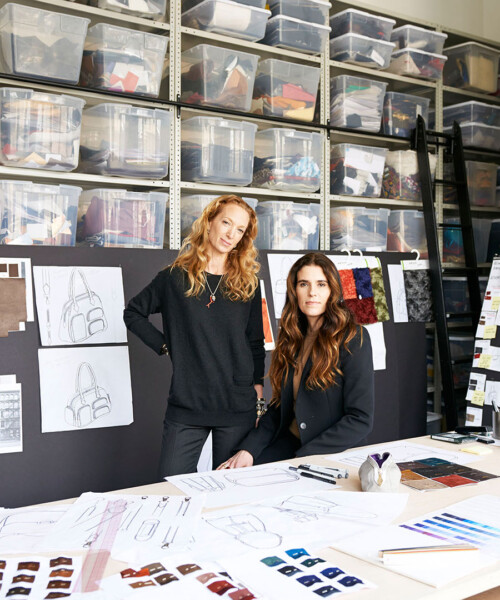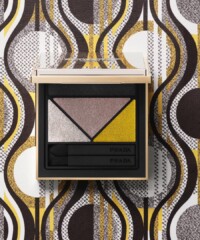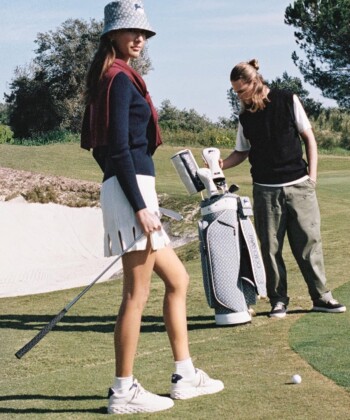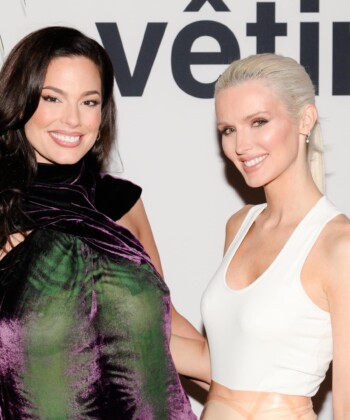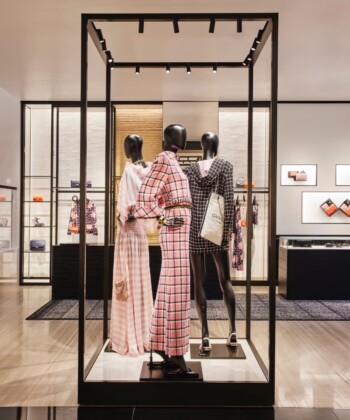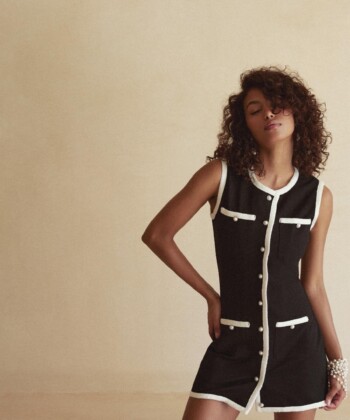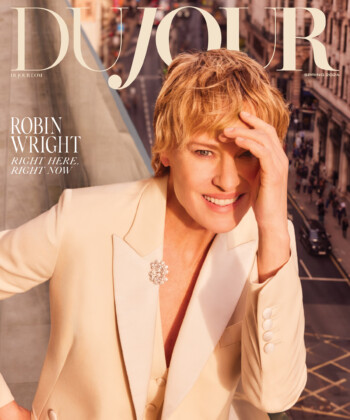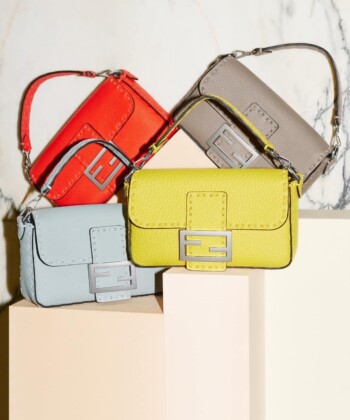Monica Zwirner and Lucy Wallace Eustice, the founders of handbag company MZ Wallace, are biding their time. An unusual tactic in their industry perhaps, but it seems like they’ve played it right. Fifteen years since their launch in 1999, MZ Wallace is going strong—in the past five years they’ve won New York magazine’s “Best Handbag of the Year” award, opened two New York stores, renovated their original West Village boutique and moved into an expanded global headquarters—but still, Zwirner and Eustice aren’t taking any chances. They are toeing their way through the minefield of the fashion industry’s digital age with care and precision. “I had dinner with the most famous merchant in America this summer,” Zwirner says, “and he said, ‘I don’t know what’s going on, honestly. It’s a totally different landscape than it used to be.’”
Both born and raised New Yorkers, Eustice and Zwirner became friends in the early 1980s, “when Monica was a stylist and I was at Manolo Blahnik,” says Eustice, whose maiden name lends the “Wallace” to MZ Wallace. “She would come to pick up shoes, and we would go smoke in the basement.” The years passed and Zwirner married David Zwirner, the buzzed-about art dealer and gallerist, and they moved to Germany. Eustice entered the world of editorial fashion and rose in the magazine ranks, having arrived at the position of accessories director at Elle when she ran into Zwirner in the Union Square farmer’s market one day in 1999—where the plot to found MZ Wallace was hatched.

MZ Wallace’s founders Lucy Wallace Eustice (at left) and Monica Zwirner
When the two started their handbag venture at the turn of the century, fashion was enduring “the height of logo mania.” Unimpressed, Zwirner and Eustice believed that there was a genuine gap in the marketplace, and that “bags that functioned usually involved some kind of settling, and not being stylish.” They wanted to create a handbag line that served the multifaceted everywoman (at least, the everywoman buying designer handbags).
But even with a strong conception of what they wanted, the right moves along the way have proven far from evident. “There were a ton of brands that started when we were starting,” Zwirner says, “and they became super successful and everyone was saying, why don’t you do it like them? But now all those brands are gone. They sold their brands, they sold their names.” While MZ Wallace is still moving forward to the beat of their own drum, Eustice points out that their longevity is accompanied by a peculiar “unbranded” anonymity. “No one knows who we are, we don’t advertise, no one gets it—we’re not like anyone else, really.”
“Who they are” is in fact a little slippery, but “versatile” and “practical” are the main words that come to mind: MZ Wallace bags are designed to function in many different ways, for many different people. They say their customers’ ages’ range from 17 to 70, and they have launched a venture called the “Portrait Project”—profiling New York women of all kinds with photographer Anna Bauer—to demonstrate this.

The “I Am Somebody” tote collaboration between MZ Wallace and Glenn Ligon
“It’s a good way to show people visually what we would say our brand is about,” Zwirner says. The prototypical MZ Wallace bag is big enough to be an organized work (or diaper) bag, but fashionable enough to take out with you after work. Prices range from around $200 to over $400, and their signature fabric is a material called “Bedford Nylon,” developed to be lightweight, highly durable and both water and stain resistant.
Part of what has shaped this company’s trajectory seems to be a reticence to forfeit any control. They’ve attempted many times to hire a fantasy outside expert with all the answers, but Zwirner says they realized this was a delusion. The fashion e-commerce industry is “evolving so quickly that there are certain positions we’re trying to fill at the company, and we just can’t find the people—mostly because I just don’t think the training for them exists.”
If you’re thinking that perhaps MZ Wallace has a few aces up their sleeve via the art world—that would be both true and not. Recently, MZ Wallace launched a tote designed in collaboration with Glenn Ligon, the prominent Bronx-born conceptual artist, featuring his painting “I Am Somebody.” They designed the limited edition tote as a charity project for the Studio Museum in Harlem (to which all the profits will be forwarded), where Ligon was a curatorial intern as a young man. Incidentally, Zwirner and Glenn went to high school together for a few years at Walden.
“Monica really understands and values working with artists,” Ligon says, “This bag wasn’t just me turning over a JPEG and then seeing a final product months later. The process was incredibly collaborative, and the MZ Wallace team was truly patient with and respectful of all of my very specific aesthetic concerns, from the scale of the print to the color or the trim. The end result is not just a lovely bag—it’s really a wearable work of art.”
Undoubtedly Zwirner has an immense appreciation for the arts and a vast network at her fingertips, but surprisingly, when it comes to her business, she usually likes to keep things separate.
“What the Studio Museum is doing is really great and to be able to support that felt incredibly meaningful… but we’ve actually made a point of not working with artists much. Everyone uses that as a way to get press and fluff themselves up. Over the years people have said, ‘Well, why don’t you do collaborations?’ And it’s always felt like a bit of a cheap shot to me. You know, these huge brands do it—these huge brands we all know—and the little ones too, and everyone’s kind of glomming on to get something.”
This attitude seems to be in tune with the high-minded restraint that, in the end, seems to be what defines MZ Wallace. Zwirner and Eustice aren’t gambling on anyone else to do their job. “One thing I’ve learned the longer we run this business is what a large role instinct plays in all of this,” Zwirner says with finality, “You have to trust your instinct. At the end of the day, our names are on every bag, and we’re the ones paying the bills.”

























